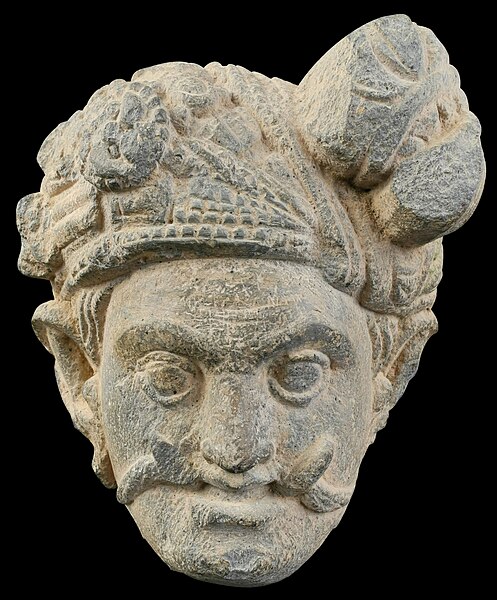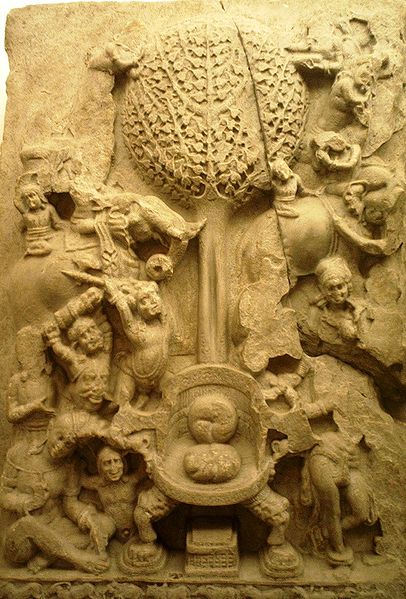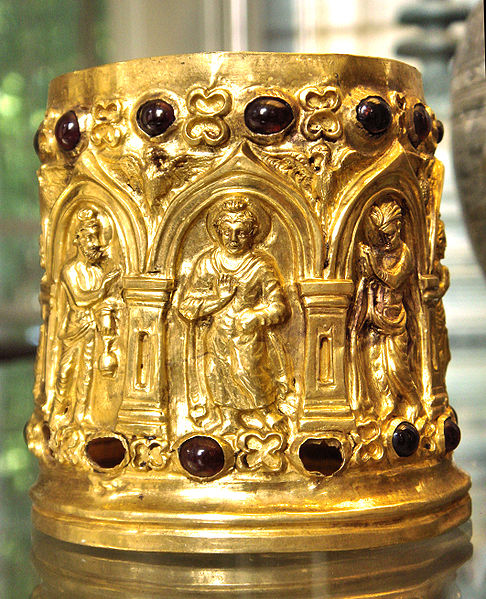Mara, in Buddhism, is a malignant celestial king who tried to stop Prince Siddhartha from achieving Enlightenment by trying to seduce him with his celestial Army and the vision of beautiful women who, in various legends, are often said to be Mara's daughters.
Relief fragment of Mara in Gandhara style, found in Swat Valley
The demons of mara. Palm leaf manuscript. Nalanda, Bihar, India
Mara's assault on the Buddha (an aniconic representation: the Buddha is only symbolized by his throne), 2nd century, Amaravati Stupa, India
Mara, his lustful daughters, and demonic army, attempting to tempt Buddha, on a 10th-century icon from Mogao Caves
Siddhartha Gautama, most commonly referred to as the Buddha, was a wandering ascetic and religious teacher who lived in South Asia during the 6th or 5th century BCE and founded Buddhism. According to Buddhist legends, he was born in Lumbini, in what is now Nepal, to royal parents of the Shakya clan, but renounced his home life to live as a wandering ascetic. Buddhists believe that after leading a life of mendicancy, asceticism, and meditation, he attained nirvana at Bodh Gaya in what is now India. The Buddha then wandered through the lower Indo-Gangetic Plain, teaching and building a monastic order. Buddhist tradition holds he died in Kushinagar and reached parinirvana, final nirvana.
Statue of the Buddha, preaching his first sermon at Sarnath. Gupta period, c. 5th century CE. Archaeological Museum Sarnath (B(b) 181).
The Buddha, Tapa Shotor monastery in Hadda, Afghanistan, 2nd century CE
One of the earliest anthropomorphic representations of the Buddha, here surrounded by Brahma (left) and Śakra (right). Bimaran Casket, mid-1st century CE, British Museum.
Māyā miraculously giving birth to Siddhārtha. Sanskrit, palm-leaf manuscript. Nālandā, Bihar, India. Pāla period








